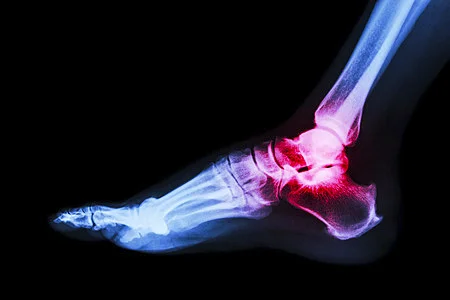If pain is not resolved with conservative treatment of osteochondral lesions, surgical treatment may be recommended. The procedure is dependent on the size of the lesion, but in most cases, ankle arthroscopy is recommended.
Arthroscopy of the ankle is a less invasive surgical technique performed through small incisions that give full access to a joint. This involves placing a telescopic camera (the diameter of a drinking straw) and small tools into the joint while watching the surgery on a monitor. The area of loose cartilage is cleaned up and small holes are put into the area in effort to stimulate healing and the formation of fibrocartilage. The obvious advantages of arthroscopy over traditional techniques are the smaller incisions that permit early range of motion, as well as a reduction in postoperative recovery time with less pain and swelling.
Typically, patients are non-weightbearing for 6 weeks to permit healing of the area.
After surgery, in most instances, we recommend early range of motion activities, especially if scar tissue was found within the ankle. This early motion helps to prevent return of the adhesions and promote faster recovery. Research shows that approximately 70% of patients do very well after this procedure and it is regarded as a first line surgical treatment for osteochondral lesions.* If the ankle arthroscopy fails to relieve pain or the talar dome lesion is very large, a type of Cartilage Resurfacing may be recommended.
Reference*Ferkel RD, Zanotti RM, Komenda GA, Sgaglion NA, Cheng MS, Applegate GR, Dopirak RM. Arthroscopic Treatment of Chonic Osteochondral Lesions of the Talus. Am Journ Sports Med; 36(9): 1750-1762, 2008.




